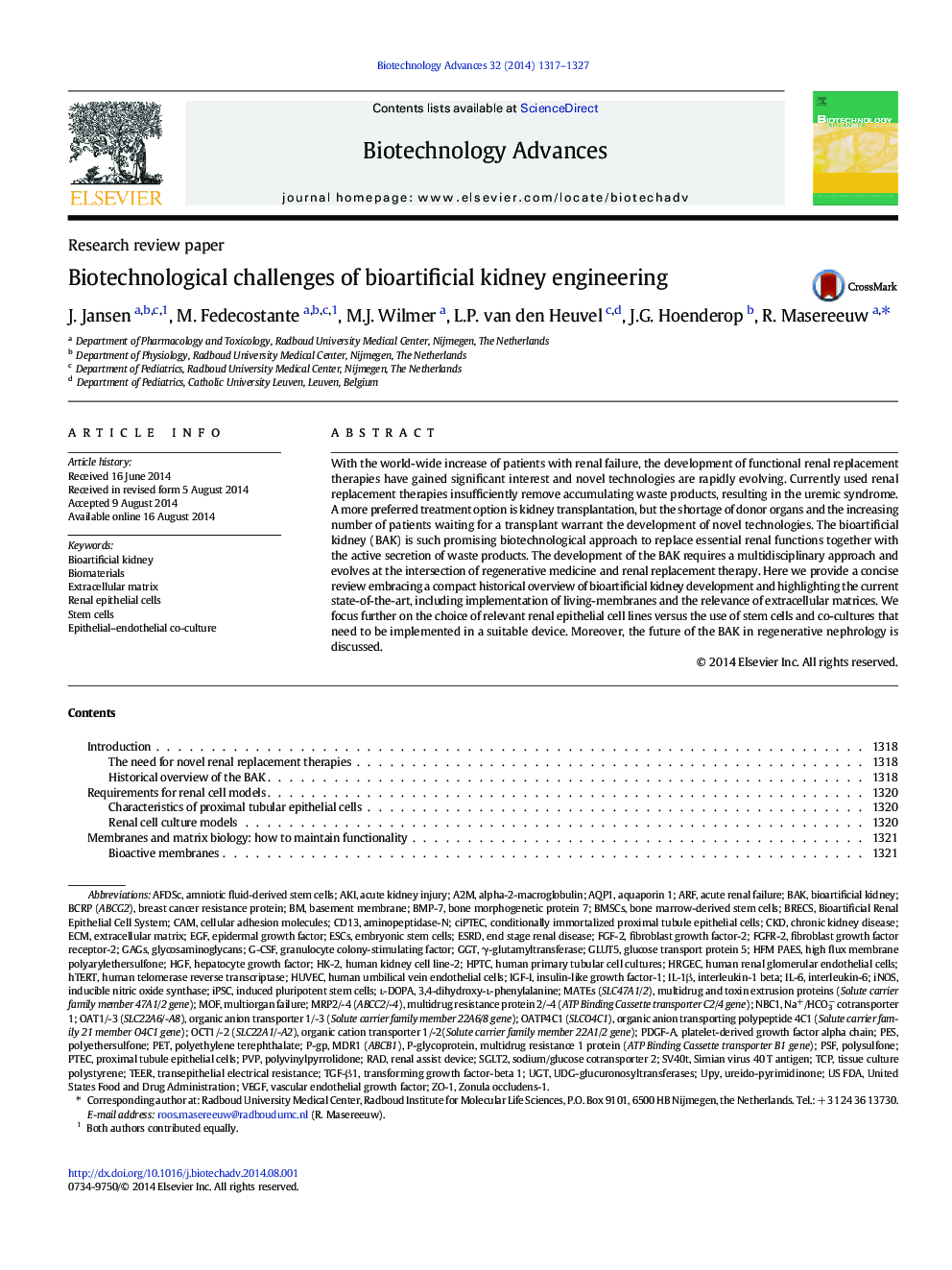| Article ID | Journal | Published Year | Pages | File Type |
|---|---|---|---|---|
| 14251 | Biotechnology Advances | 2014 | 11 Pages |
With the world-wide increase of patients with renal failure, the development of functional renal replacement therapies have gained significant interest and novel technologies are rapidly evolving. Currently used renal replacement therapies insufficiently remove accumulating waste products, resulting in the uremic syndrome. A more preferred treatment option is kidney transplantation, but the shortage of donor organs and the increasing number of patients waiting for a transplant warrant the development of novel technologies. The bioartificial kidney (BAK) is such promising biotechnological approach to replace essential renal functions together with the active secretion of waste products. The development of the BAK requires a multidisciplinary approach and evolves at the intersection of regenerative medicine and renal replacement therapy. Here we provide a concise review embracing a compact historical overview of bioartificial kidney development and highlighting the current state-of-the-art, including implementation of living-membranes and the relevance of extracellular matrices. We focus further on the choice of relevant renal epithelial cell lines versus the use of stem cells and co-cultures that need to be implemented in a suitable device. Moreover, the future of the BAK in regenerative nephrology is discussed.
